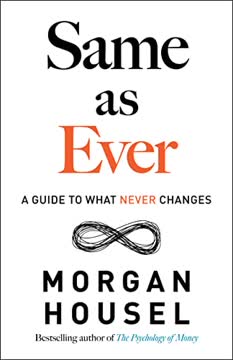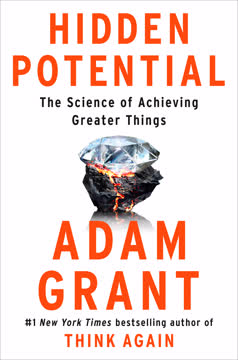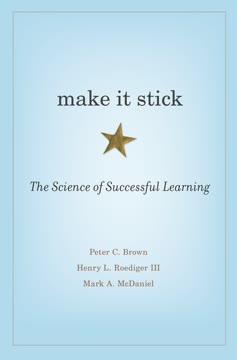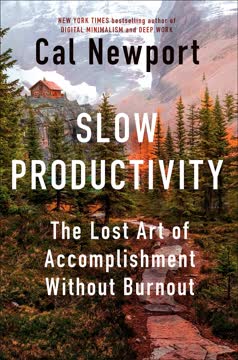Key Takeaways
1. Motivation is the foundation of peak performance
"If you're interested in being your best, your inner monologue needs to support the best you want to be."
Internal drivers are key. Motivation is what gets you into the game of peak performance. It consists of three core components: drive, grit, and goals. Drive refers to powerful emotional motivators like curiosity, passion, and purpose that fuel behavior automatically. Grit is about persistence and determination in the face of challenges. Goals provide direction and focus.
Intrinsic motivation trumps extrinsic. While external rewards like money and fame can be motivating, intrinsic motivation - doing something because it's inherently rewarding - is far more powerful for sustained peak performance. The key intrinsic motivators are:
- Curiosity
- Passion
- Purpose
- Autonomy
- Mastery
Align your motivators. To maximize motivation, stack and align these intrinsic drivers. Find work that satisfies your curiosity, ignites your passion, serves a meaningful purpose, gives you autonomy, and allows you to pursue mastery. This creates a powerful motivational foundation for peak performance.
2. Curiosity, passion, and purpose form the intrinsic motivation triad
"If you diversify and have an eclectic range of interests, and you are constantly [gathering] interesting stories about things that you do not know that much about or are adjacent to your particular field of expertise, you are much more likely to come up with innovative ideas."
Cultivate curiosity. Curiosity is the starting point for passion and purpose. To develop it:
- Make a list of 25 things you're curious about
- Look for intersections between your curiosities
- Spend 20-30 minutes daily exploring these intersections
- Take your explorations public by discussing with others
Transform curiosity into passion. Passion emerges from the overlap of multiple curiosities coupled with some early successes. It's not always pleasant - it often feels like frustration and looks like obsession. Embrace the emotional journey.
Find your purpose. Purpose takes the motivational energy of passion and gives it greater meaning by connecting it to something beyond yourself. To discover your purpose:
- List 15 massive problems you'd love to see solved
- Look for overlaps between your passions and these global challenges
- Craft a "massively transformative purpose" (MTP) that uses your passion to do good in the world
3. Goals provide direction and focus for motivation
"Clear goals tell us where and when to put our attention. If our goals are clear, the mind doesn't have to worry about what to do or what to do next—it already knows."
Set goals at multiple levels. Effective goal-setting involves three types of goals:
- Massively Transformative Purpose (MTP) - lifelong mission
- High, Hard Goals (HHG) - challenging multi-year objectives
- Clear Goals - specific daily/weekly targets
Make goals challenging but attainable. Goals should push you slightly beyond your current abilities - aim for about 4% beyond your skill level. This "challenge-skills balance" keeps you engaged and growing without being overwhelmed.
Focus on clear, short-term goals. While having a big-picture purpose is important, day-to-day motivation comes from clear, achievable goals. Break larger objectives into bite-sized chunks. Write a daily to-do list of 5-8 items that align with your bigger goals and sit in your challenge-skills sweet spot.
4. Grit is essential for long-term success and overcoming obstacles
"To those human beings who are of any concern to me, I wish suffering, desolation, sickness, ill-treatment, indignities. . . . I wish them the only thing that can prove today whether one is worth anything or not—that one endures."
Develop mental toughness. Grit combines passion and perseverance. It's about showing up day after day, especially when things get tough. To build grit:
- Practice willpower through daily habits
- Cultivate a growth mindset
- Embrace challenges as opportunities to improve
Master different types of grit. Peak performers cultivate six types of grit:
- Perseverance
- Thought control
- Fear mastery
- Being your best when at your worst
- Training weaknesses
- Recovery
Make grit a habit. Develop the "habit of ferocity" - the ability to automatically rise to any challenge. This involves consistently pushing yourself outside your comfort zone and reframing obstacles as opportunities for growth.
5. Learning is a lifelong pursuit crucial for peak performance
"Books are the most radically condensed form of knowledge on the planet."
Adopt a growth mindset. Believe that your abilities can be developed through effort and learning. This mindset leads to greater resilience and achievement.
Read voraciously. Books offer unparalleled return on investment for learning:
- 3 minutes reading a blog = 3 days of author effort
- 20 minutes reading an article = 4 months of author effort
- 5 hours reading a book = 15 years of author effort
Use the five-book method. To learn any new subject:
- Read a popular, accessible book on the topic
- Read a more technical book directly about the subject
- Read a book giving a macroscopic perspective
- Read a challenging book on current thinking in the field
- Read a book about the future of the topic
Learn by doing. Combine knowledge acquisition with skill development. Apply what you learn through hands-on practice and real-world application.
6. Creativity drives innovation and problem-solving
"Creativity is paradoxically about pulling something out of the brain that was never put into it."
Understand the creative process. Creativity involves three main neural networks:
- Attention Network - focuses on relevant information
- Imagination Network - generates novel ideas
- Salience Network - determines what's important
Cultivate creativity daily. Implement these strategies:
- Maintain a positive mood
- Seek out broad vistas and new experiences
- Allow for unstructured "non-time"
- Start with unfamiliar ideas to expand thinking
- Use constraints to drive creative solutions
- Constantly feed your pattern recognition system with diverse information
Embrace long-haul creativity. Sustaining creativity over a career requires:
- Developing a wide range of skills
- Maintaining a maker's schedule with long blocks of focused time
- Taking regular breaks for incubation
- Surrounding yourself with challenging people
- Treating frustration as part of the process
7. Flow states unlock extraordinary human potential
"Flow is defined as 'an optimal state of consciousness where we feel our best and perform our best.'"
Understand flow biology. In flow:
- The prefrontal cortex temporarily deactivates (transient hypofrontality)
- Brain waves shift to the alpha-theta borderline
- Neurochemicals like dopamine, norepinephrine, anandamide, serotonin, and endorphins flood the system
Trigger flow states. Key flow triggers include:
- Clear goals
- Immediate feedback
- Challenge-skills balance
- Complete concentration
- Rich environments (novelty, complexity, unpredictability)
- High consequences
- Deep embodiment
- Creativity
Maximize flow cycles. Flow occurs in a four-stage cycle:
- Struggle - load information and push your limits
- Release - relax and let your subconscious process
- Flow - experience peak performance state
- Recovery - rest and integrate learnings
8. Recovery and self-care are vital for sustained high performance
"A high-flow lifestyle demands an active recovery protocol."
Prioritize sleep. Aim for 7-8 hours of quality sleep nightly. Deep sleep is crucial for memory consolidation and learning.
Implement active recovery. Use techniques like:
- Mindfulness meditation
- Saunas or hot baths
- Massage
- Light yoga or stretching
- Time in nature
Create a sustainable routine. Balance intense work periods with adequate recovery. Schedule daily and weekly practices:
- 90-120 minutes of uninterrupted concentration daily
- 2-6 hours of high-flow activities weekly
- 60 minutes of exercise 3x/week
- 20-40 minutes of active recovery 3x/week
- Weekly social support and feedback sessions
Monitor for burnout. Watch for signs of exhaustion, cynicism, and decreased performance. Adjust your routine as needed to maintain long-term peak performance.
Last updated:
FAQ
What's The Art of Impossible about?
- Peak Performance Focus: The Art of Impossible by Steven Kotler is a guide to achieving peak performance through understanding the science of creativity, motivation, and flow.
- Four Key Skills: It emphasizes four essential skills—motivation, learning, creativity, and flow—that are crucial for pushing limits and accomplishing extraordinary feats.
- Practical Playbook: The book provides a practical guide for readers to apply these concepts in their own lives, regardless of their starting point.
- Science and Real-Life Examples: Kotler combines insights from neuroscience with real-life examples of athletes and innovators to illustrate how to achieve the impossible.
Why should I read The Art of Impossible?
- Achieve Ambitious Goals: If you have dreams that seem out of reach, this book offers a roadmap to help you realize them.
- Science-Backed Strategies: The author combines personal anecdotes with scientific research, making the advice both relatable and credible.
- Unlock Your Potential: It provides actionable strategies to help you unlock your full potential and achieve your goals in any field.
- Inspiration and Practical Techniques: Kotler shares stories of real-life successes and offers practical techniques that can be implemented immediately.
What are the key takeaways of The Art of Impossible?
- Motivation Triad: The book introduces the motivation triad—drive, grit, and goals—as essential for achieving peak performance.
- Flow Cycle: It outlines the flow cycle, which includes four stages: struggle, release, flow, and recovery, crucial for maximizing creativity and performance.
- Creativity as a Skill: Kotler emphasizes that creativity can be trained and developed, not just an innate talent.
- Emotional Intelligence: The book highlights the importance of emotional intelligence, breaking it down into self-awareness, self-management, social awareness, and relationship management.
How does The Art of Impossible define flow?
- Optimal State of Consciousness: Flow is described as a state where individuals are fully immersed in an activity, experiencing heightened focus and enjoyment.
- Neurochemical Cocktail: The state of flow releases a mix of neurochemicals that enhance focus, creativity, and learning.
- Characteristics of Flow: Kotler outlines six core characteristics of flow, including complete concentration and a sense of control.
- Essential for Peak Performance: Flow is necessary for achieving the impossible, as it amplifies motivation and productivity.
What is the "passion recipe" mentioned in The Art of Impossible?
- Stacking Intrinsic Drivers: The passion recipe involves cultivating curiosity, amplifying it into passion, and then transforming that passion into purpose.
- Creating a List: Readers are encouraged to write down twenty-five things they are curious about to identify intersections that can lead to deeper passions.
- Public Successes: Sharing your passions with others and receiving positive feedback can further ignite and solidify your passion.
What are the stages of the flow cycle in The Art of Impossible?
- Four Stages: The flow cycle consists of struggle, release, flow, and recovery, each playing a vital role in achieving peak performance.
- Struggle: This initial stage involves grappling with challenges and acquiring new skills, essential for preparing the brain for flow.
- Release and Flow: The release phase allows the brain to process information subconsciously, leading to the flow stage where optimal performance occurs.
- Recovery: Recovery is necessary to recharge and prepare for the next cycle, ensuring sustainable peak performance.
What is the "habit of ferocity" discussed in The Art of Impossible?
- Automatic Response to Challenges: The habit of ferocity refers to the instinctive ability to rise to challenges without hesitation.
- Training for Resilience: Developed through consistent practice and alignment of intrinsic motivators, it helps individuals handle obstacles and maintain focus.
- Long-Term Benefits: This habit enhances overall performance by allowing individuals to tackle challenges head-on, saving time and energy.
What techniques does Kotler suggest for enhancing creativity in The Art of Impossible?
- Befriend Your ACC: Kotler emphasizes the importance of the anterior cingulate cortex (ACC) in recognizing weak signals and fostering insight.
- Broaden Your Horizons: Engaging with diverse experiences and perspectives can stimulate creative thinking.
- Practice Mindfulness: Mindfulness practices can help quiet the inner critic and allow for greater creative flow.
What is the "80/20 rule" in the context of The Art of Impossible?
- Focus on the Vital Few: The 80/20 rule suggests that 80% of results come from 20% of efforts, meaning you should concentrate on the most impactful areas.
- Maximize Efficiency: By identifying key components that yield the greatest results, you can accelerate your path to mastery.
- Application in Skill Acquisition: This principle can be applied to both learning new skills and improving existing ones, ensuring efforts are directed toward what truly matters.
How does The Art of Impossible address emotional intelligence (EQ)?
- Crucial for Success: Kotler emphasizes that “other people matter,” highlighting the importance of social support and emotional intelligence.
- Four Areas of EQ: The book breaks down emotional intelligence into self-awareness, self-management, social awareness, and relationship management.
- Training EQ: Techniques such as active listening and empathy are recommended to enhance emotional intelligence, boosting motivation and collaboration.
What are some practical exercises to improve performance from The Art of Impossible?
- Daily Gratitude Practice: Engaging in a daily gratitude practice can enhance mood and increase creativity.
- Uninterrupted Concentration: Dedicating 90 to 120 minutes each day to uninterrupted concentration on important tasks allows for deeper engagement and flow.
- Active Recovery: Incorporating active recovery practices, such as light exercise or mindfulness, helps recharge the brain and maintain long-term peak performance.
What are the best quotes from The Art of Impossible and what do they mean?
- “The impossible is actually a little farther out.”: This quote emphasizes that our limits are often self-imposed, and with effort, we can push beyond what we think is possible.
- “You get one shot at this life.”: A reminder to make the most of our time and pursue our passions and goals with vigor.
- “Flow is the source code of intrinsic motivation.”: This underscores the idea that flow experiences are deeply rewarding and can drive individuals to pursue their passions.
Review Summary
The Art of Impossible receives mixed reviews, with many praising its comprehensive approach to peak performance and motivation. Readers appreciate Kotler's insights on flow states, creativity, and learning. Some find the neuroscience explanations dense, while others value the practical tips and checklists provided. Critics argue the book rehashes ideas from other sources and lacks originality. Overall, it's recommended for those new to peak performance concepts, but may not offer much new information for experienced readers.
Similar Books










Download PDF
Download EPUB
.epub digital book format is ideal for reading ebooks on phones, tablets, and e-readers.







